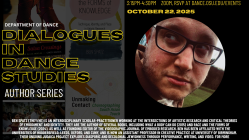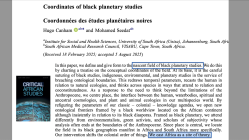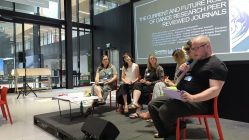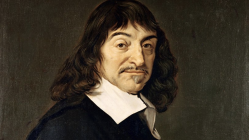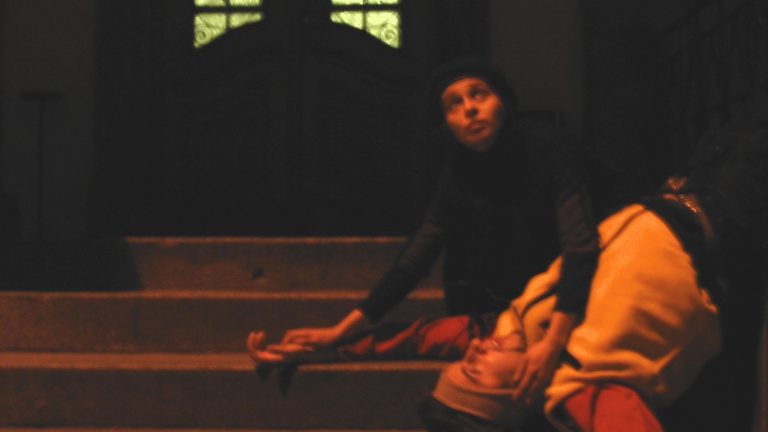1. Premises
A theater that is truly native to the city would not confine itself to isolated studios and stages but would grow like a weed in all urban locations: mundane and sacred, public and private. Our theater will take the entire urban landscape as its natural environment. We will not require neutral, empty, or quiet spaces in order to begin, but will start immediately from the lively, cluttered, and noisy sites that make up the modern city. We will not hold our rehearsals in rented studio spaces and then later move outside, but will immerse ourselves from day one in the available world of streets, parks, alleyways, empty lots, elevators, and rooftops, as well as schools, libraries, churches, hospitals, community centers, and living rooms.
A limited or stylistically defined range of theatrical style is insufficient in this context. Where the audience is educated and aspires to global perspective, a compartmentalized theater (of realistic comedy, traditional ballet, stylized drama, etc.) will engage only small and homogeneous audiences. In order to make sense in relation the entire city, we must draw on the full range of theatrical technique and form. All performative categories should be considered potentially useful, from realism to storytelling to dance to documentary to formalism to carnival. All types of content should be accessible, from the topical to the eternal to the abstract. The result of this diversity must be neither a patchwork of recognizably quoted material nor a bland soup of muddled ingredients. Each element must retain its identity without disrupting the coherency of the whole, in a synthesis modeled after that of the city itself. As in the city, the most interesting points will be at the borders between contrasting neighborhoods or styles.
A research theater is one that maintains the practical rigor and objective orientation of a “theater laboratory” but which functions as part of an open system with the rest of society rather than in isolation. Following the model of explorers or archeologists rather than theoretical physicists, the heart of an urban research theater must be the urban expedition. This is a mission of research and practice and simultaneously a kind of generous pilgrimage through the city. The journey could include travel by train or car but would be done mostly on foot, running or walking. It should include both private and public spaces and should address the social and historical aspects of the city as well as its physical structure. The goal of the expedition is not to present a show to a series of anonymous audiences but to create reciprocal performance events in which audience and performers come together in temporary community.
The expedition should be part of the theater process at every step, from rehearsal and workshopping to performance, and should provide the basic environment for training and development. Since the requirements of an empty parking lot, a busy intersection, and a subway car are so different — not to mention those of a living room or cafeteria — an expedition-based theater must be radically flexible. Its basic craft must be built around movement through a varied landscape. Instead of altering our locations to match a preconceived set design, or purposefully staging a “site-specific” version of our show, we will assume from the very beginning that everything we do must be at home in any urban space.
2. The Material Environment
Theater artists are uniquely skilled to investigate the relationship of the human body to its environment. Our work is both intellectual and embodied. Our research into human culture is incarnated in material questions. What is the structure of possibility presented by a given physical environment or landscape? How does sound work across varied architectures? How can a space of play and liminality be created within a complex social organism like the city? How can a tone of seriousness be established where shallow interactions are the norm? What is the nature and range of communication among strangers in an urban setting? When and how is the “city as temple” revealed? How to sing a song that touches people? How to move so that others feel you moving? How to speak and be heard? These are ancient and eternal theatrical questions that demand new answers for each moment in which they are asked.
In the city, the animal body of flesh and blood is wrapped up in a manufactured body of clothing and cars and buildings. Within this second skin, the human animal continues to walk and sing and make love and eat and shit and live out our animal lives. The work of the urban actor begins at the point of interface between the animal and the urban. To begin with, we may ask: Who lays their hands on the body of the city and why? Who treats the street as a place in itself? Who lives not on the city but in the city? The answer begins with street vendors, garbage collectors, skateboarders, graffiti artists, joggers, and the homeless. These people can give us not only poetic inspiration but also concrete methodology and technique. We can also look at where the animal manifests itself suddenly in the urban, such as instances of public anger or public sex, the behavior of children and the insane, the presence of sickness or death, and the impact of weather. Each of these is a point of contact between the urban and the animal. Many other such points of contact exist in our own daily lives and in our work as theater artists — for example, in the process of taking a song from a compact disc and bringing it into the ongoing oral tradition of an ensemble’s musical work.
We will have to follow the rhythms of the city as a sailor follows the rhythms of the sea, and build our work sturdy enough to stay afloat among the interesecting patterns of work days, rainstorms, rush hours, and other more seasonal changes. We will search for open spaces and gaps, both spatial (such as parks, empty lots, and alleyways) and temporal (such as red lights, traffic jams, and blackouts). What can be done in a crosswalk while the cars are on pause? What openings exist in the background stream of pop music that hovers in many public places? We will also create our own gaps, using the more spectacular side of theater — such as bright costumes and unison movement structures — to open up spaces on the inside where more subtle and serious work can become visible. Our portable theater must include its own active proscenium arch made out of bodies and voices, which can change in shape and size to fit any situation, and which can mediate like a picture-frame between the chaos of life and the more delicate presence of deeper work. As urban artists we have to produce not just the show onstage but the stage itself, not just the flame but also the jar that protects and displays that flame in the most volatile of situations.
In addition to these basic features of the urban landscape, our theater will need to be intimately acquainted with the legislative and enforcement patterns that govern behavior and spectacle, especially in public places. All of this research, from the rhythm of traffic lights to public obscenity laws, could eventually prove useful not just to other urban theaters but to all those who organize parties, rallies, festivals, or social gatherings of any kind. In mapping the possibilities for performance in the city, we are also charting the overall relationship between the human animal and its constructed environment.
3. The Social Environment
The primary audience of our theater must never be the traditional audience of ticketed consumers. This is why the central town square and the official theaters come last of all on our list of places to go. The audience in these places brings with them an overwhelming desire to be entertained, and we will not step into these places until our work is strong and serious enough to overcome those expectations. It is a question of who owns the space in which performers and audience come together. Our preferred territory is the public — where performers manifest spontaneously and without invitation — and the private — where the audiences invite us for their own sake and in their own name. These are the conditions for a genuine meeting of communities, and they are not met by commercial spaces in which both performers and audience are manipulated by an absent third party.
The objective orientation of our theater is not towards the experience of the performers but towards the overall phenomenon of our existence and practice and its effects on the city. By focusing our energy on concrete results rather than internal experience, we can avoid becoming self-indulgent tourists. In our travels through the city we must never be outsiders imposing ourselves on urban life, but always fellow citizens grappling with the meaning of our citizenship. Our relationship to the city must be reciprocal, and our expeditions both research and result. In other words, our theater must be a form of community service. In exchange for our labor, it will then offer certain gifts — such as unprecedented mobility — to the members of our research theater. We should be like taxi drivers or nurses, who through their professions get to catch a glimpse of the vast range of urban experience which is hidden from people who remain isolated in their jobs or neighborhoods. Our work should take us to places and bring us into contact with people whom we would otherwise never meet. In this way theater can be a key to the city.
The strength of our theater will be measured by its relationship to the society in which it lives rather than by its success in the theater world. Instead of performing in black box theaters at festivals around the world, our unending journey should take us across the divisions that mark our own city and into the mystery of the local. We will commit to an ongoing process of urban touring: Our impossible goal will be to play in every church, library, and school within the borders of our city, as well as on every train platform and line, in every vacant lot and open space, in each neighborhood and in every kind of community. For this we will need a serious program of outreach and networking. Just like any organization for housing or other social concerns, the success of our project will depend on our relationships with other urban institutions and on our reputation for integrity.
4. Results
A city is a microcosm. New York City is the largest city in the United States. We reject the idea that one has to travel to India or Africa in search of powerful dances, primal rhythms, or living rituals. There are sacred mysteries in Chinatown, the south Bronx, Central Park, Wall Street, and Staten Island. Hundreds of languages are spoken in Queens alone. If shamans and magic circles and secret communities and ancient traditions and sacred songs exist in the world, then they also exist in New York City. It is just a question of finding and recognizing them in their urban forms.
We also reject that idea that serious work can only be done in isolation. We have seen the quality of work that can be achieved under monastic conditions and we are interested in exploring the compromise between everyday life and extraordinary achievement. We are unwilling to sever our ties to contemporary civilization with its cell phones, tax forms, landfills, and beaurocracy. We cannot go live on the mountain. Instead we can ask: What power of the mountain can be brought home? What is the place of the sacred in the city? Where in the metropolis are there manifestations of the eternal human need for communal story, communal song, and communal dance? Where does the shaman go? These questions cannot be answered by speculation, but only through concrete research and practice.
To produce theater that is native to the city means, by extension, to produce human beings who are native to the city. As urban performance artists we aim to rediscover and reclaim our citizenship. A true urban citizen would be both comfortable and useful in every urban space, from the corner store to the board room to the street. Yet how many theater artists can make this claim? How many residents? In our work we will use theater as a key to the city and performance as a model for active engagement. The people who work in and with this theater will develop a new relationship to the city, both its inanimate body and its inhabitants. This will be our contribution to the ongoing development of the urban animal.
Ben Spatz
Wroclaw, Poland and
Cambridge, Massachusetts
October 2004


